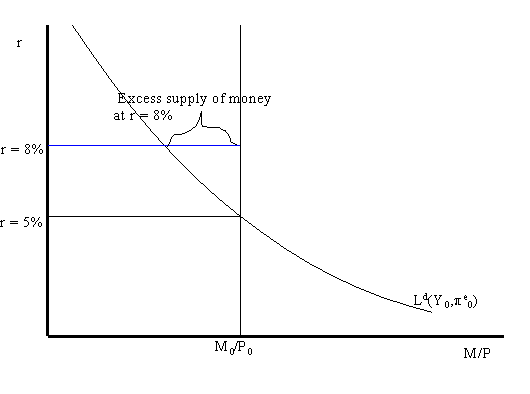- In A Particular Economy The Real Money Demand Function Is Called
- In A Particular Economy The Real Money Demand Function Is One
- In A Particular Economy The Real Money Demand Function Is Best

In A Particular Economy The Real Money Demand Function Is Called
Portfolio decision to demand for money. In open economy macroeconomics, money is considered as part of a portfolio, which consists of domestic financial assets, real assets, and foreign assets. Traditional studies on demand for money have often ignored the influence of foreign monetary developments. The demand for money comes from the desire to hold liquid assets of which money is the only perfect example. It may be noted that money is not demanded for its own sake but because it can be used to purchase economic goods and services. In a particular economy the real money demand function and real money supply are: M S P = M 0 P M D P = ‘ 1 + ‘ Y Y-‘ r (r + π e) (a) Derive the equation for LM curve and draw its graph assuming ‘ 1 = 3000 ‘ Y = 0. 1 ‘ r = 10000 M 0 = 6000 P = 2 π e = 0. 02 (b) What is the real interest rate, r, that clears the asset market when Y = 8000? Graph the LM curve.
In A Particular Economy The Real Money Demand Function Is One
In A Particular Economy The Real Money Demand Function Is Best
where Y is real output, r is the real interest rate, and πe is the expected rate of inflation. Real output is constant over time at Y = 150. The real interest rate is fixed in the goods market at r = 0.05 per year.
a. Suppose that the nominal money supply is growing at the rate of 10% per year and that this growth rate is expected to persist forever. Currently, the nominal money supply is M = 300. What are the values of the real money supply and the current price level? (What is the value of the expected inflation rate that enters the money demand function?)
b. Suppose that the nominal money supply is M = 300. The central bank announces that from now on, the nominal money supply is going to grow at the rate of 5% per year. If everyone believes this announcement, and if all markets are in equilibrium, what are the values of the real money supply and the current price level? Explain the effects on the real money supply and the current price level of a slowdown in the rate of money growth.